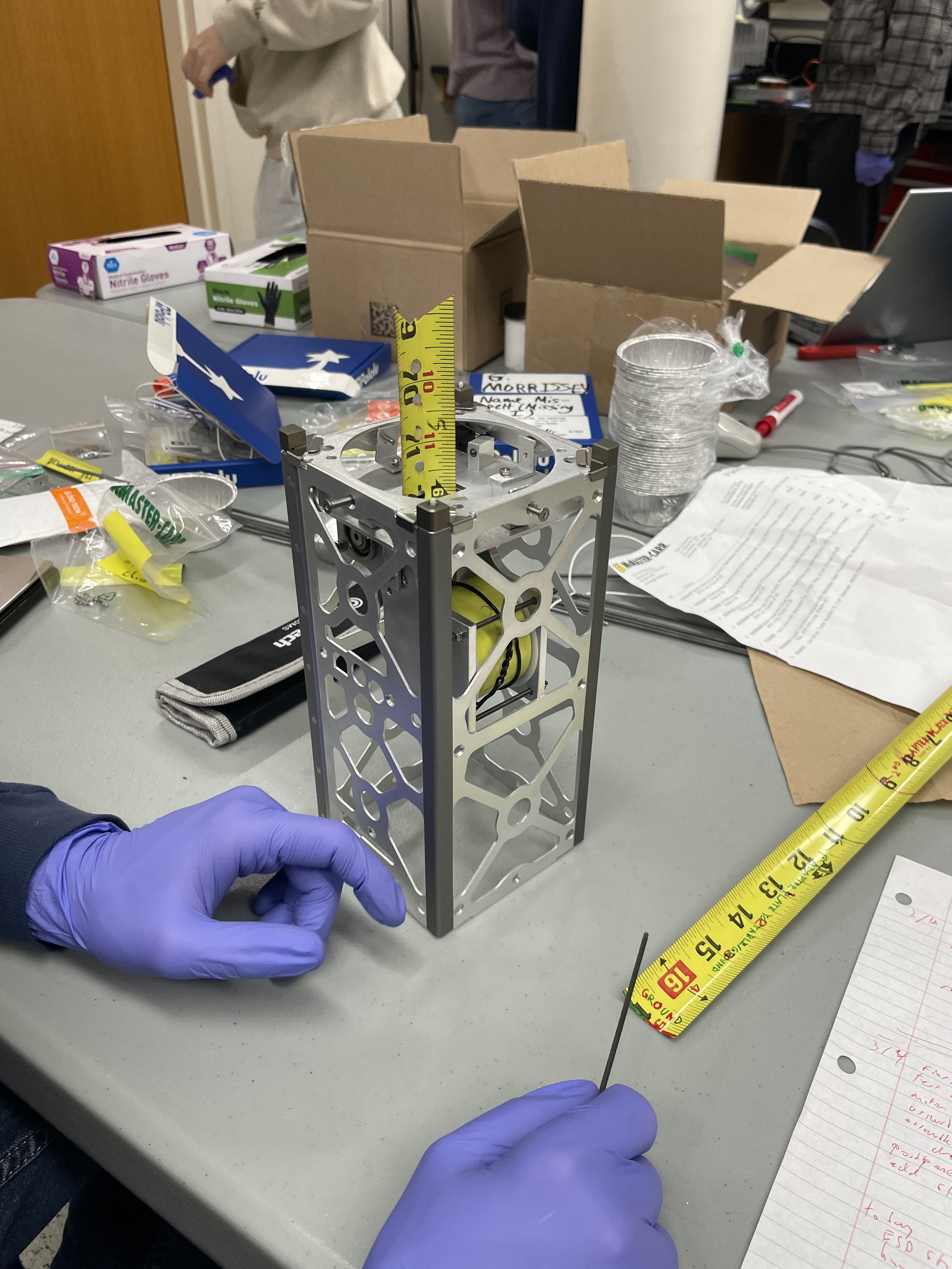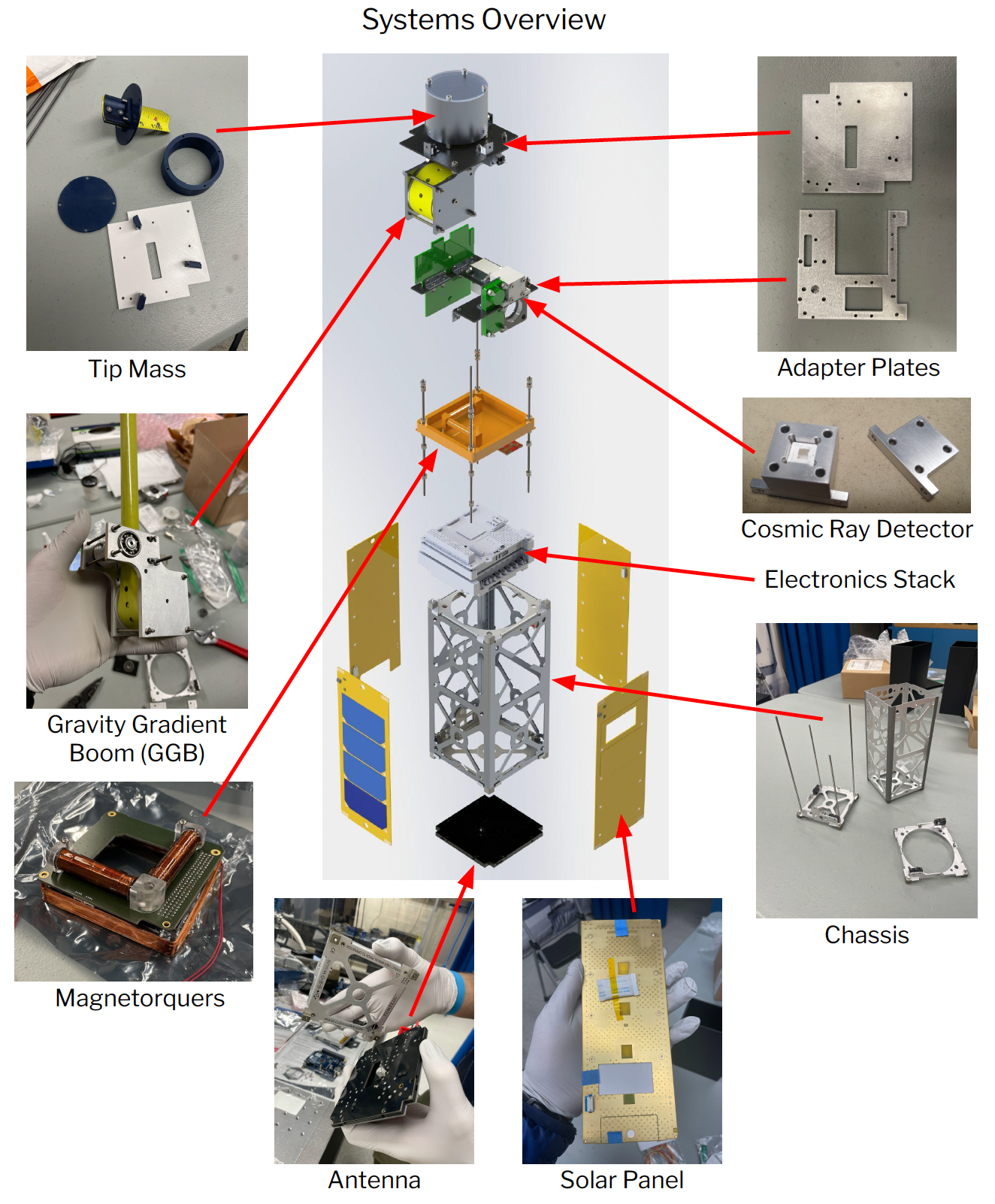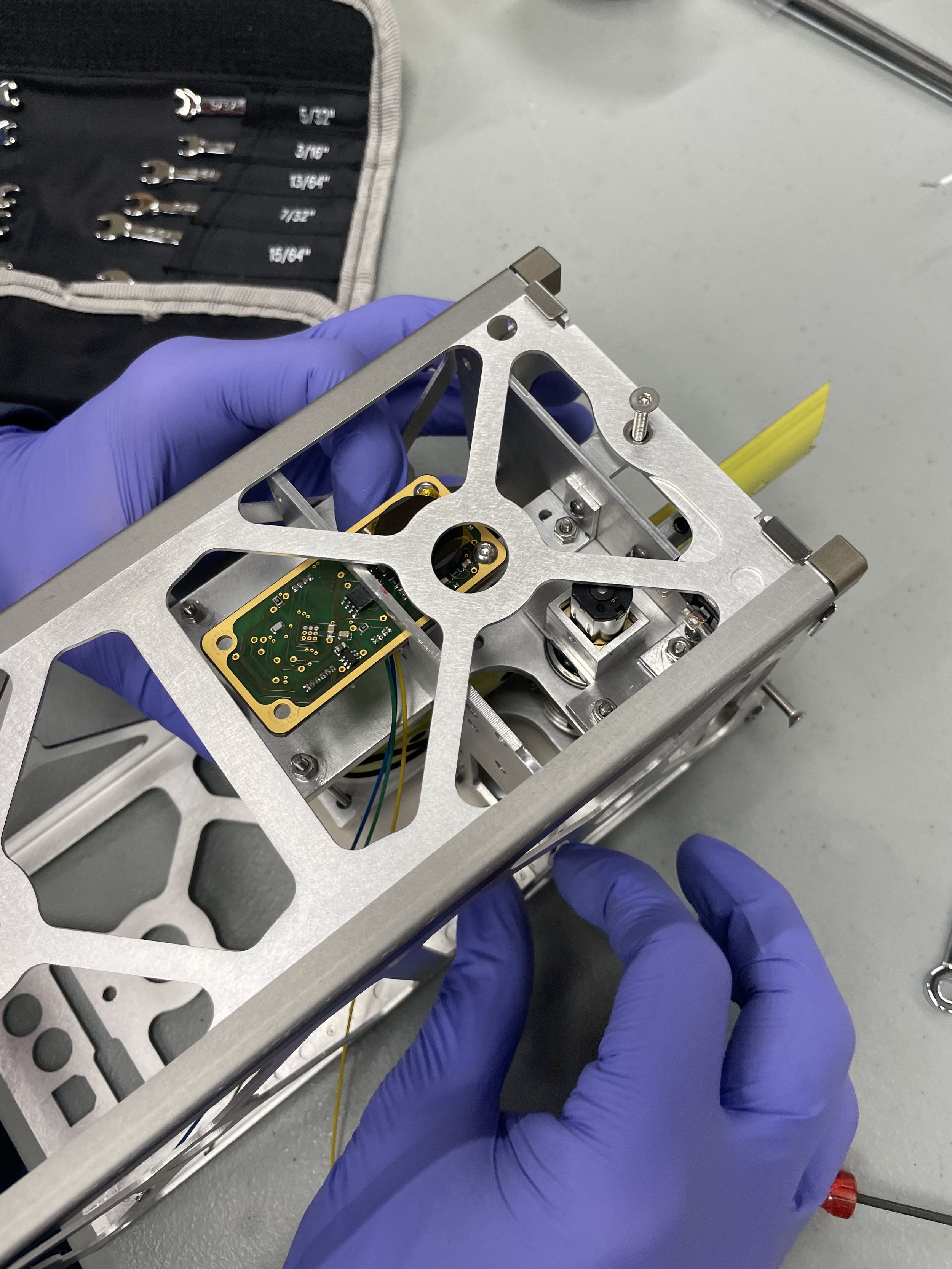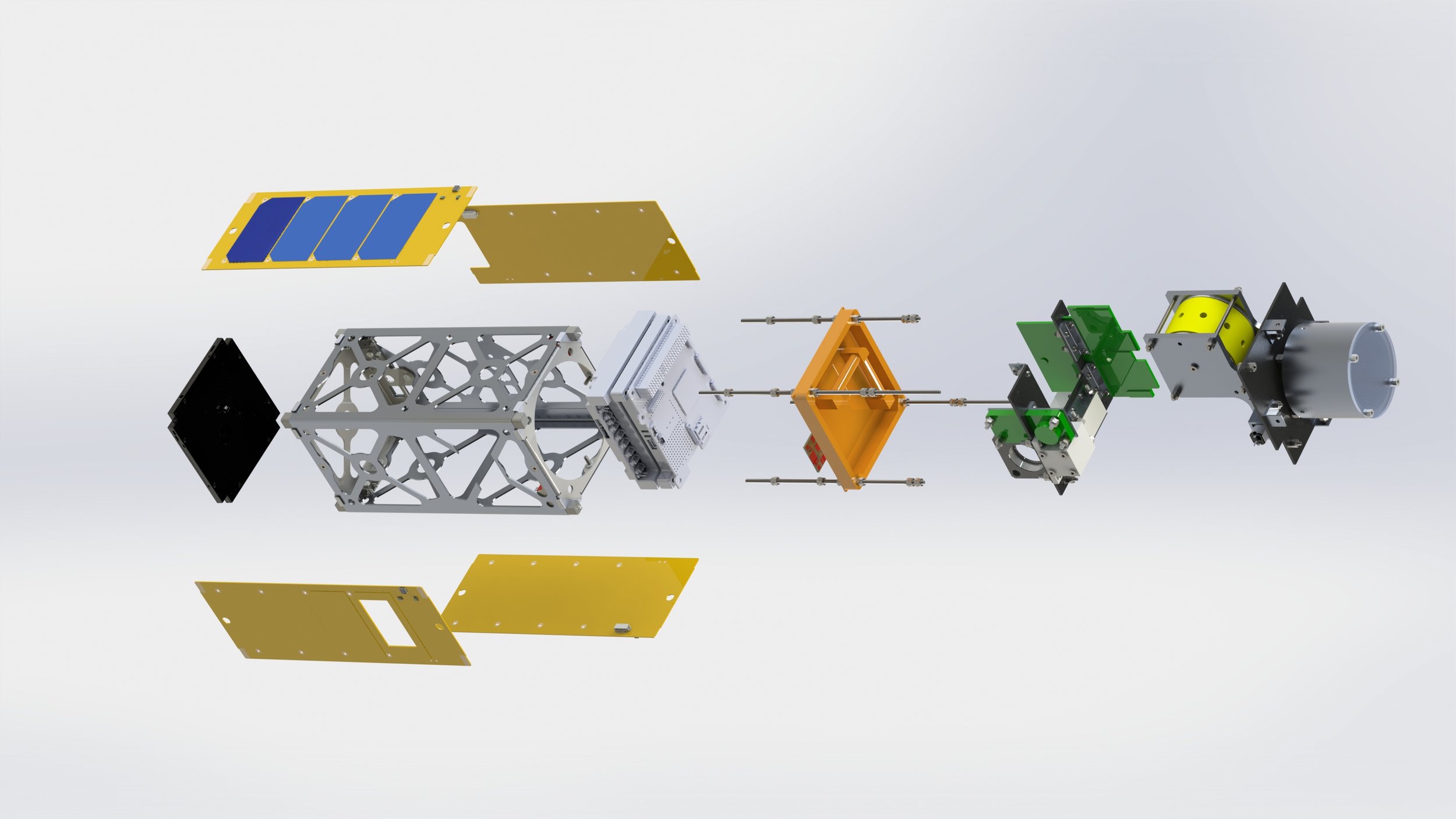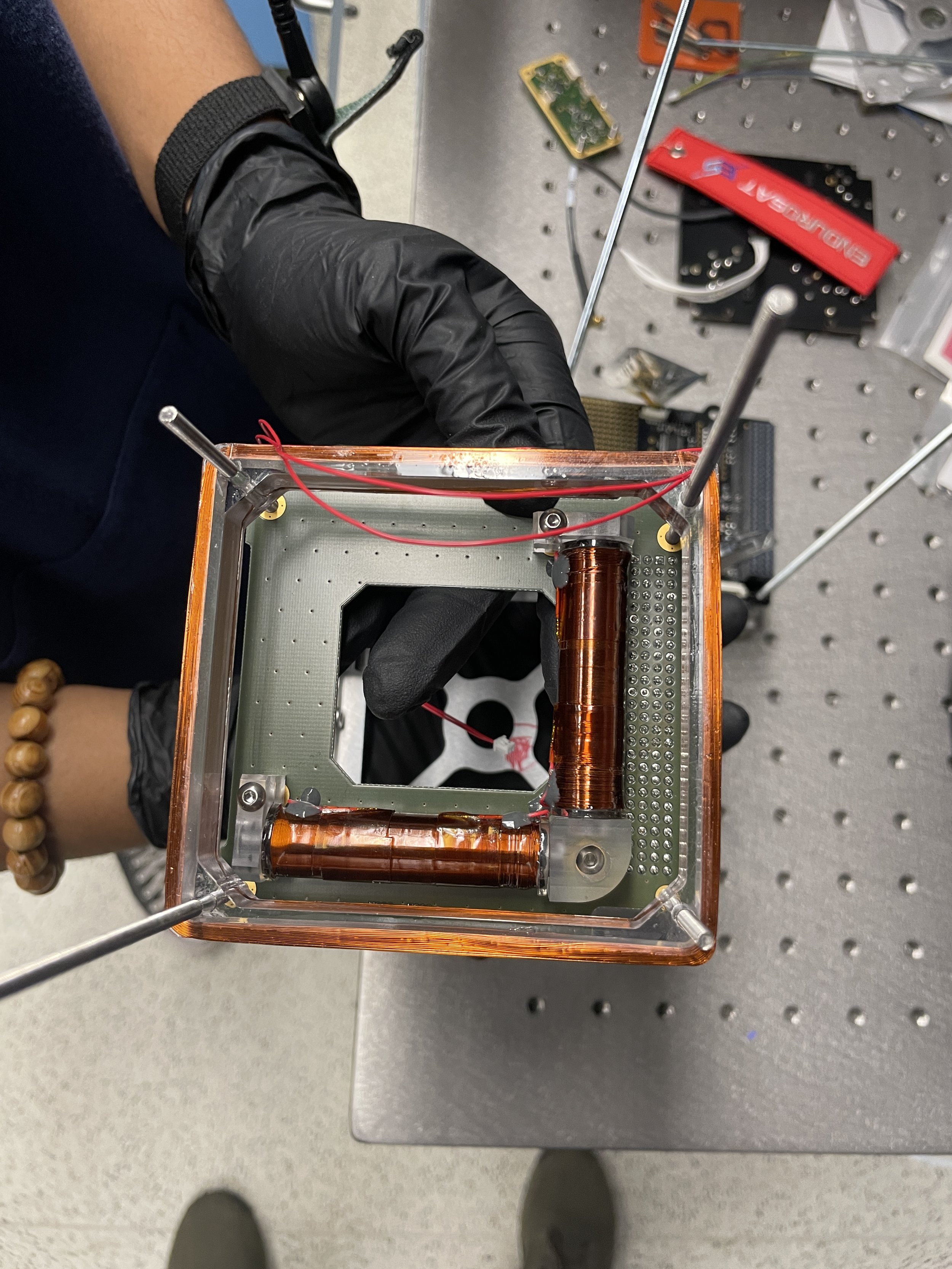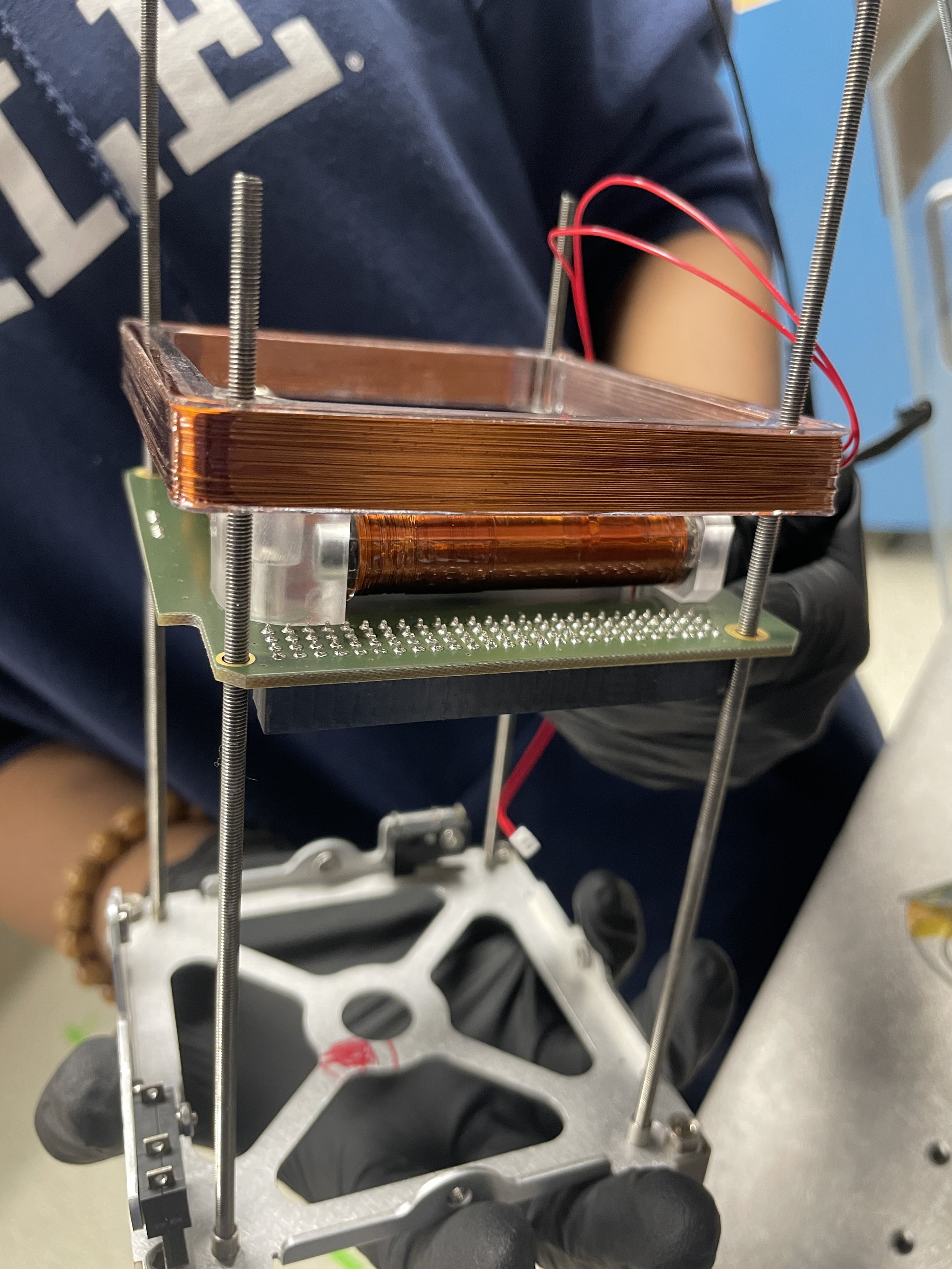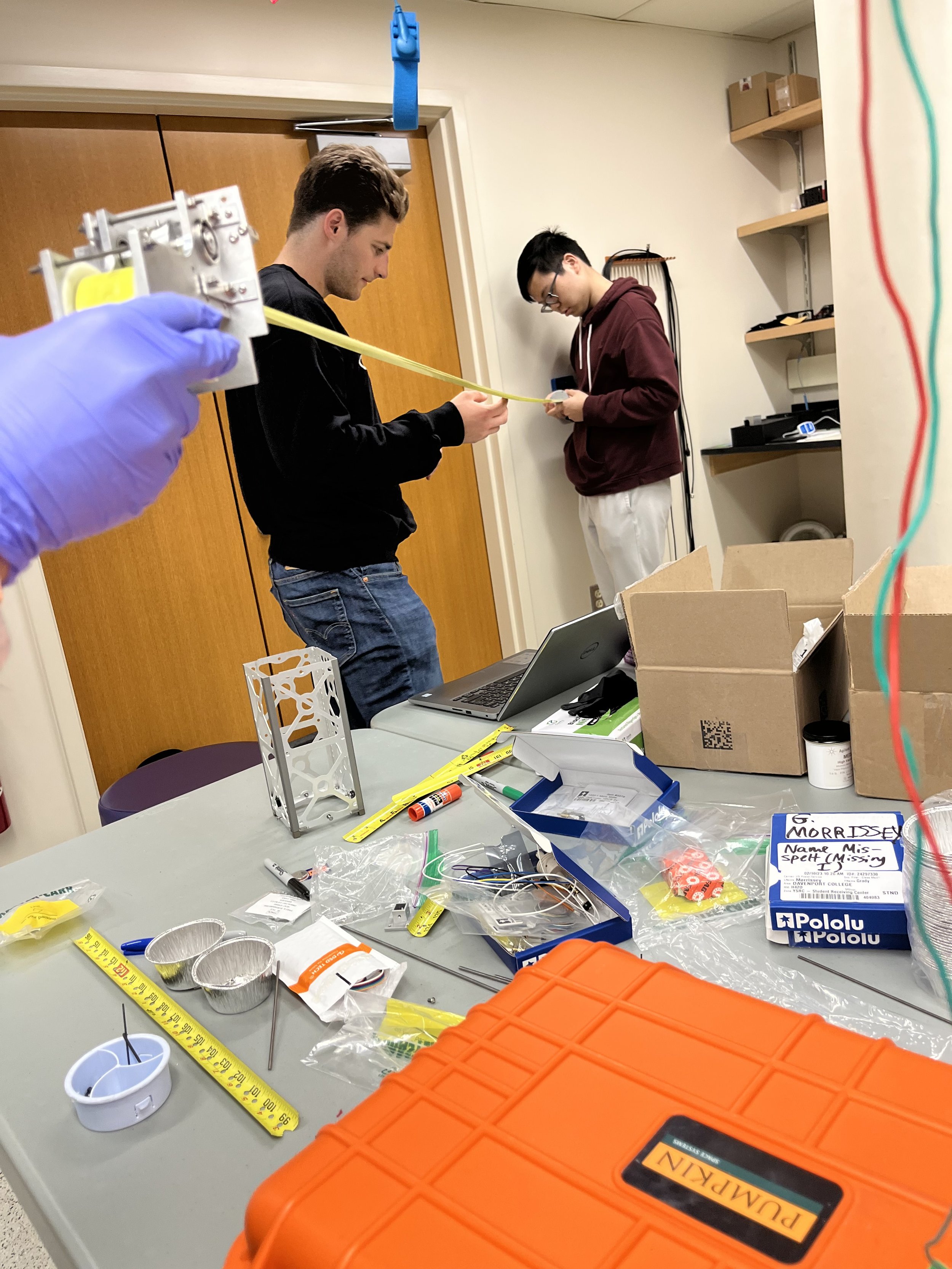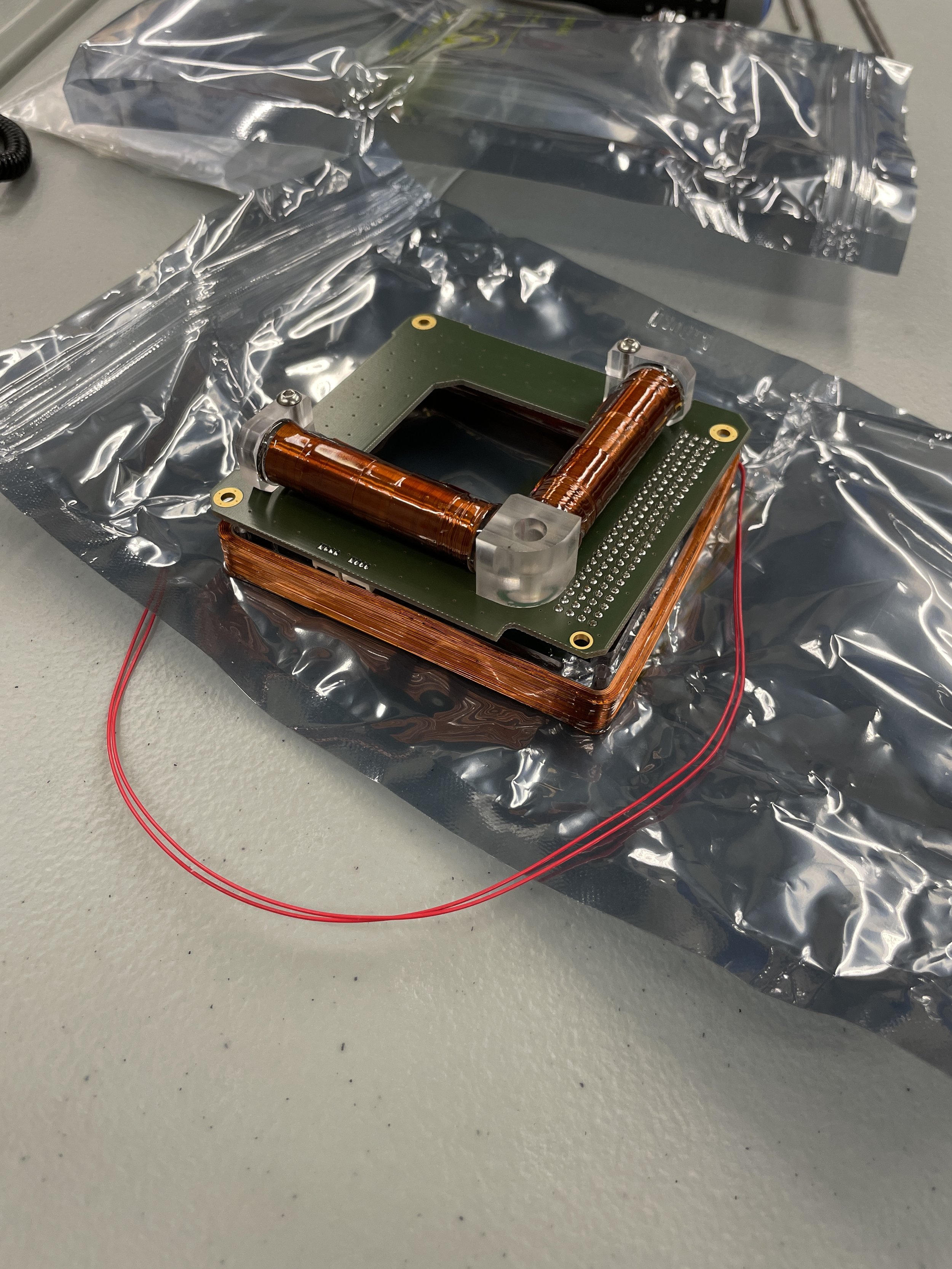CubeSat
The CubeSat team is designing and building a CubeSat that will carry a cosmic ray detector to measure high-energy protons and electrons originating from the sun and outside the galaxy. The team will collect information on the density and count of these particles above a certain threshold, make inferences as to the energy of the particles, and identify each particle it detects. Commended at White House Astronomy Night 2015 alongside the radio telescope ahead of its first meeting, the corner-stone project that has inspired generations of Yale students to learn the values of long-term engineering is now preparing itself for a 2024 NASA Handoff.
Year-By-Year Highlights
-
The YUAA starts CubeSat, the first undergraduate initiative launched at Yale to build a spacecraft. Even before the project’s first meeting, the CubeSat proposal is recognized in association with the Radio Telescope for White House Astronomy Night.
-
Description text goes here
-
The YUAA receives the NASA CSLI in February 2018, largely thanks to a push in new team leadership. NASA support helps the team find components and funding sources with greater ease.
The team begins ordering components like the magnetometer and magnetorquer. CubeSat buys a computer intended to work for the CubeSat, but this idea is abandoned.
Initial work on the cosmic ray detector starts, but designs are constantly revised or scrapped as the team looks for the optimal solution.
-
Coders persevered to write a custom OS for the CubeSat’s new computer. The Mechanical team identified the necessity of a gravity gradient boom, and CAD models were fully employed.
